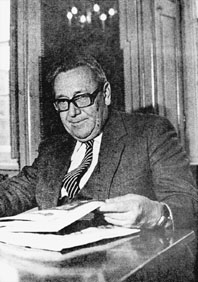

 | Page 1044 |  |
of the greatest political and police terror. Ideologizing markedly decreased after 1956 and had disappeared almost completely by the 1970s. From the Marxist perspective, archaeology was considered to be the history of material culture, which was reflected in the reform of archaeological studies. Historical materialism imposed a belief in the primacy of the material conditions of human life. Postwar archaeology became a purely historical discipline focused on progress that hypothetically took place in subsequent periods of prehistory.
The first years after the war were mainly devoted to the reconstruction of ruined research centers. Some were reconstituted on so-called regained territories in the west (Silesia, the Lubusz Lands, and Pomerania). New departments of archaeology were founded at the Universities of Lublin, Łódź, Toruń (which continued the traditions of the University of Vilnus), and Wrocław (which was a continuation of the University of Lvov). Both Vilnus and Lvov did not fall within the borders of postwar Poland.
In 1946 the Institute for the Research on Slavonic Antiquities was established. It was a product of the growing interest in the prehistory of Slavdom, and it included, as well as archaeology, the disciplines of anthropology (the works of Jan Czekanowski), linguistics (Tadeusz Lehr-Spławiński), ethnology (Kazimierz Moszyński), and history in general (Kazimierz Tymieniecki). This field of interest proved to be one of the most important areas of contact between archaeologists from Slavonic socialist countries, and the new journal Slavia Antiqua was founded in 1948 primarily for the sake of promoting such contact. An encyclopedic Dictionary of Slavonic Antiquities, including information from prehistory, history, and ethnography, has been published since 1961. In 1952 witold hensel published the monumental Early Medieval Slavdom, which has since had four editions. These interests culminated in the International Congress of Slavonic Archaeology, held in 1965 in Warsaw, and other such congresses have been organized every five years since then. Another result was the foundation of the International Union of Slavonic Archaeology.
Next to the reestablishment of journals founded before the war, new ones appeared, many of them published under the auspices of museums. Another important moment in the development of the Polish archaeology after World War II occurred in 1966, a consequence of the celebration of the millennium of the Polish state and the Christianization of Poland by Prince Mesco I. A special institution was founded to coordinate all the undertakings in this area. In 1949 the Management of Studies of the Beginnings of the Polish State was established under the supervision of Aleksander Gieysztor. This move was the beginning of the biggest research program in the history of Polish archaeology, in which almost all active archaeologists in Poland participated. The result was an enormous increase in the number of publications concerning the early Middle Ages.

Witold Hensel
(Arkadiusz Marciniak)
The central archaeological body, the Institute of the History of Material Culture of the Polish Academy of Sciences, was established in 1953 and inaugurated on January 1, 1954. Initially the institute focused its research projects on the millennium of the Polish state. For many years (from 1954 until 1989) it was directed by Witold Hensel. In 1991 it was renamed the Institute
 |  |